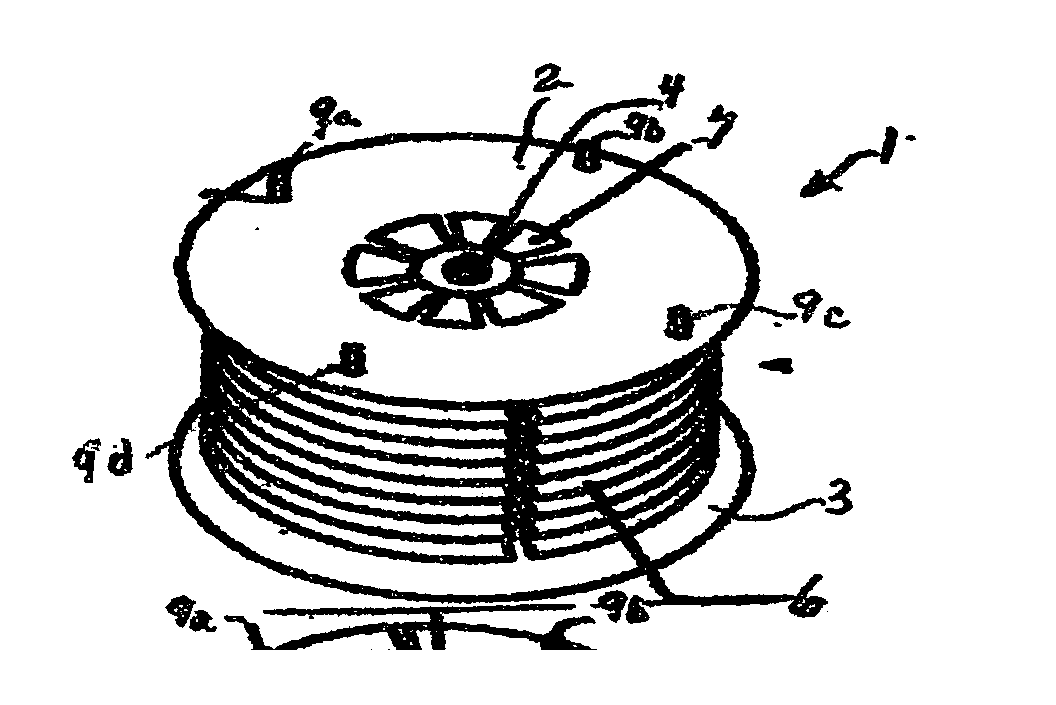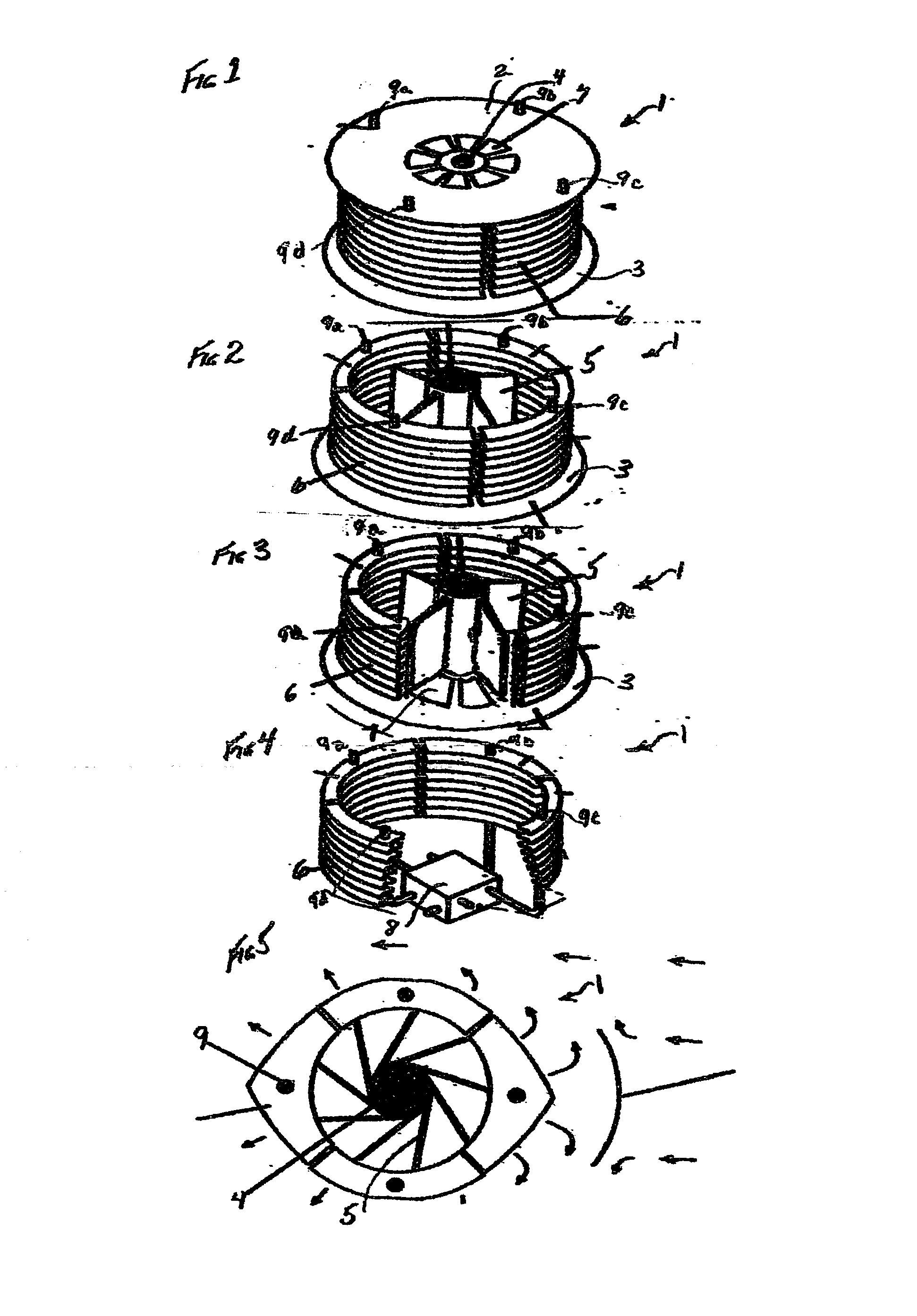Omnidirectional fan-heatsinks
a fan heatsink and omnidirectional technology, applied in the direction of machines/engines, liquid fuel engines, lighting and heating apparatus, etc., can solve the problems of increasing power consumption of computers, especially the power consumption of central processing units (cpus) used in them, and not achieving high efficiency
- Summary
- Abstract
- Description
- Claims
- Application Information
AI Technical Summary
Benefits of technology
Problems solved by technology
Method used
Image
Examples
Embodiment Construction
[0011] Referring to FIGS. 1-4 together since all elements are not equally visible in each Figure and wherein like reference numerals are used where appropriate; in accordance with the invention the structural principle of the fan-heatsink 1 may be viewed as consisting of top 2 and bottom 3 cover members with a central power shaft 4 through them, the shaft 4 has fins 5 visible in FIGS. 2 and 3 attached so as to rotate around the shaft between the covers 2 and 3 within a housing of louvered heat exchangers 6 to move an ambient heat bearing gas such as air. The ambient enters the fan-heatsink 1 via inlets 7 through the covers 2 and 3 near the central power shaft 4 and is forced out through the louvers 6 that make up the periphery of the fan-heatsink housing. A heat pipe transfer capability is provided involving a conduction block 8 through which heat pipe conductors 9 (a-d) of which four are shown transfer heat between the conduction block 8 and the louvers 6.
[0012] It will be apparent...
PUM
 Login to View More
Login to View More Abstract
Description
Claims
Application Information
 Login to View More
Login to View More - R&D
- Intellectual Property
- Life Sciences
- Materials
- Tech Scout
- Unparalleled Data Quality
- Higher Quality Content
- 60% Fewer Hallucinations
Browse by: Latest US Patents, China's latest patents, Technical Efficacy Thesaurus, Application Domain, Technology Topic, Popular Technical Reports.
© 2025 PatSnap. All rights reserved.Legal|Privacy policy|Modern Slavery Act Transparency Statement|Sitemap|About US| Contact US: help@patsnap.com


